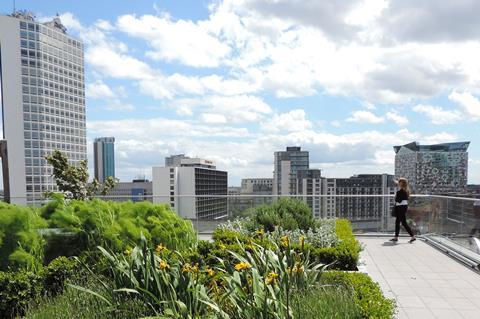One effect of the current health crisis has been to focus on how we can redesign or rethink the places we live, work and play in to deal with this and future pandemics. That should mean new workstreams.

Every building owner and occupier needs to review access, circulation, layout, toilet facilities, lifts, foyers, security and so on. The people best placed to help with this are the architects, designers, space planners and facilities managers who know most about the building.
None of this will be simple, but as we are already seeing in prototype school layouts, not impossible. From a design point of view, there is a possibility of making more civilised interior environments because there will be a premium on space, volume and distancing, rather than the quest to cram more people into ever-smaller areas.
In the case of offices, even if only a few staff are in a workspace at any one time, ensuring their wellbeing will not be achieved by rigid desk- bench layouts. Cost consultants will have to rethink. For workspaces generally, the sardine-can mentality is out. Density of occupation is no longer king. Thoughtful architects are already running seminars about potential approaches in this new era — and clients should seize new ideas with alacrity. The cost of workspace to employers is a drop in the ocean compared with the cost of running almost any business as a whole. That is not about to change.
There are opportunities for constructive improvements in the world of planning too — provided we allow local authorities the scope to set planners onto proactive work, rather than restricting them to development control.
Apart from big questions about safety and security in public spaces, there is the issue of the high street and empty shopping centres. The impact of Covid-19 on high-street retailers, multiples, bars, pubs and restaurants suggests the problems are likely to get far worse.
This may be the time for the sort of radical planning approach that would have been unthinkable until recently. One strategy would be for local authorities to become high street ‘owner/curators’, following the model of London’s great landed estates. With retail values plummeting, it might not be absurdly expensive for them to start buying leases to give future direction to what is quasi-public realm.
Freer mix of uses
Dealing with vacant premises will call for strategic planning. Sensible retrofit/adaptation should be the way forward, with a freer mix of uses than is now allowed. In some instances, conversion to residential use might make sense. Perhaps the ‘live-work’ unit could make a comeback so that properties would at least remain occupied. Perhaps increasing the proportion of space above shops that can be used for residential could be reconsidered.

What about living space itself? Coping with the possible need to go into lockdown again suggests we need to increase minimum space standards and make them compulsory. Rabbit-hutch office-to-resi conversions should be banned: either adopt decent space standards or forget it. This would mean making Boris Johnson’s London space standards, which he introduced as mayor, mandatory nationally.
The desirability of balconies as adjuncts to small apartments is now obvious: there is acknowledgement of the importance of, as Le Corbusier described it, “espace, soleil, verdure”. Terraces and roof gardens are welcome spaces, not just a management burden.
With so many difficulties (in some cases tragedies) to contend with, it can be difficult to concentrate on anything other than yet another media story of failure and threat. What would happen if everything went wrong? The general answer is that someone would make their reputation by sorting out the mess.
The property sector must address the opportunities for beneficial change, working with architects and planners as part of a collaborative regeneration effort. In the end, this will make financial, as well as social and political, sense.
Paul Finch is a programme director of the World Architecture Festival





























No comments yet